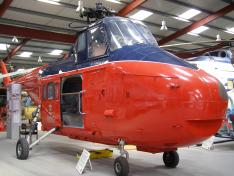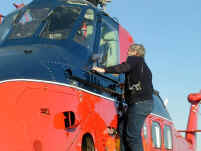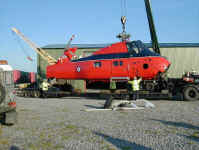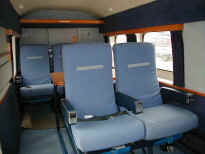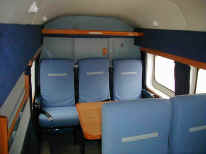Royal Visit to The Helicopter Museum - July 2007
| Her Majesty Queen Elizabeth II and His Royal Highness the Duke of Edinburgh visited The Helicopter Museum, in the afternoon of Friday 20th July 2007, to unveil a plaque commemorating the opening of the new Engineering and Conservation Hangar. The Hangar, recently completed, was built using money largely raised by the Volunteers and the Friends. |  |
The Duke of Edinburgh arrived at 2.35 pm and the Queen, following a visit to a Childrens' Centre, joined him to unveil the plaque. They both signed the visitor book before departing together, by helicopter, for London. Nearly a hundred Volunteers and Sponsor representatives, who have supported The Museum since it was opened in 1988, attended. | ||
 |
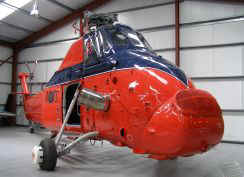 |
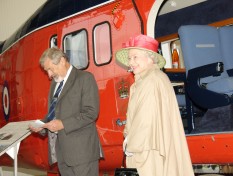 |
||
 |
 |
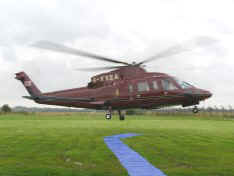 |
||
| The Duke of Edinburgh was shown
the Museum displays by Elfan ap Rees, Founder of The Museum and Chairman
of Trustees. He was introduced to the Restoration Manager, Steve Whittaker,
who introduced him to several Conservation Team Leaders. The Duke
then went into the new hangar to have informal conversations with
many of the Trustees, Staff, Volunteers and Sponsors who had gathered
there. Following the arrival of the Queen, she and the Duke spent
some time looking at Westland Wessex HCC.4, XV733, acquired by The
Museum in 2001 after 25 years service with the Queen's Flight. After
formally opening the new Conservation Hangar and signing the Museum
visitor book the Queen, the Duke and members of the Royal party left
in Sikorsky S-76C, G-XXEA. A few days previously Chairman of Trustees, Elfan ap Rees had said "We all feel tremendously honoured to be hosting the Queen on this auspicious occasion. The visit is a huge tribute to the Volunteers and Sponsors who have kept the faith and made The Museum such a success". |
||||
|
|
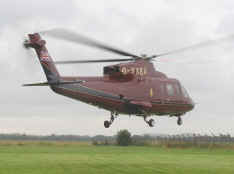 |
||
Westland Whirlwind HCC.12 |
Sikorsky S-76C | |||
Duke of York's Visit 2002
| His Royal Highness, Prince Andrew, The Duke of York, visited The Helicopter Museum on Monday 24th June, 2002, to officially open the recently completed Exhibition Hangar. It was the Prince's first visit since he opened the Museum itself on 3rd November 1989 | 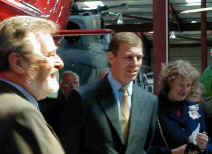 |
Prince Andrew was shown round the exhibits by the Chairman of Trustees, Elfan ap Rees. The Prince was introduced to sponsors, operators, representatives from industry and many of the volunteers, including the Museum's restoration teams. |
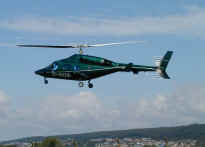 |
 |
 |
| Left: Prince Andrew arrived at about 10.20, flying in a Bell Model 222, c/n 47031, G-NOIR. He was greeted by the Lord Lieutenant of Somerset Lady Gass, and a large crowd of enthusiastic school children from nearby Locking Village. Centre: Touring the new hangar the Prince paused to talk with C.T.D. 'Sox' Hosegood who, as Chief Helicopter Test Pilot for The Bristol Aeroplane Company in the 1950s and early 60s, had flown some of the helicopters on display including the Bristol Sycamore G-ALSX, alongside, which he declares to be his favourite helicopter of the many he knew. Right: Steve Whittaker, Restoration Manager, shows the Prince some of the unusual features of the Kamov Ka-26, then nearing completion of its restoration as DDR-SPY. | ||
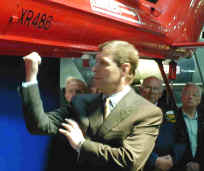 |
||
Prince Andrew points a thumb at the Westland Whirlwind, XR486, in which he flew as a child, and beyond at the Wessex, XV733, in which he flew to the Museum in November 1989 to perform the original official opening ceremony. Before he left the Museum, Prince Andrew unveiled a commemorative plaque in the Exhibition Hangar and congratulated everyone on the magnificent progress that the Museum has made and on the valuable work of skilled conservation and restoration which continues. He then proceeded, by helicopter, to Bristol where he toured S.S. Great Britain, the unique iron passenger ship built by I.K.Brunel, now restored and back in the dock where she was built and launched in 1843. After lunch he visited Toshiba's telecommunications research centre in Bristol. The following day he was due to attend events in Paris, in support of British Trade International. |
||
 |
||
Prince Andrew's career in the Royal Navy The Duke of York joined the Royal Navy in 1979. After passing out of the Royal Naval College, Dartmouth, Prince Andrew went on to elementary flying training at RAF Leeming, Yorkshire, and later learnt to fly the Gazelle helicopter at Royal Naval Air Station Culdrose, in Cornwall. After conversion to the Sea King he joined 820 Naval Air Squadron (NAS) on HMS Invincible.In 1982 Prince Andrew sailed, with his squadron on HMS Invincible, to the South Atlantic, as part of the Task Force which was despatched to regain the Falkland Islands. Throughout the conflict he flew Sea Kings on various missions including Anti-Submarine Warfare (ASW), casualty evacuation and Search and Air Rescue (SAR). The Prince was subsequently appointed to 703 NAS at Portland for Lynx conversion and, on completion in May 1984, served on HMS Brazen as the Flight Pilot. In 1988 he transferred to the General List for a year before joining 829 NAS and serving as Flight Commander until 1991. In 1993 Prince Andrew, after attending a Command Course at Camberley Staff College, was selected to command the Minehunter HMS Cottesmore for 18 months, before returning to flying duties at RNAS Portland until October 1996. A series of staff appointments followed until the Prince finally left the Royal Navy in 2001, after 22 years service, to become a roving ambassador for British Trade International, a government organisation responsible for the development of overseas trade and inward investment. |
||
Arrival of the Royal Westland Wessex HCC.4, XV733
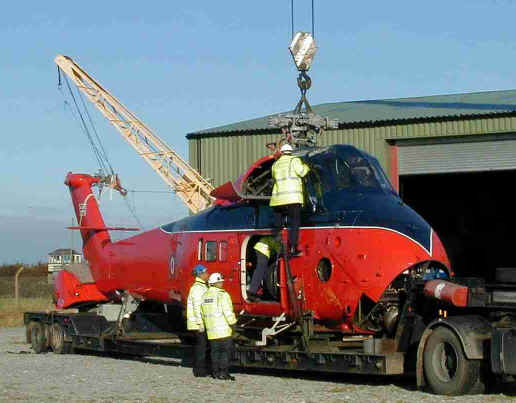 |
Westland Wessex HCC.4, XV733, formerly
of The Queen's Flight, was delivered to the Museum on a low-loader,
by the Royal Navy, on 15th November 2001. The twin-engined helicopter was built at Yeovil in Somerset
and delivered to RAF Benson on 11th July 1969, where it served,
with The Queen's Flight alongside XV732, until 1995 and was
used by all the senior members of the Royal Family including
the Queen, the Queen Mother, the Prince of Wales, the Duke of
York, Princess Anne and Princess Diana. XV733 joins Westland Whirlwind HCC Mk.12, XR486, in The Museum.
XR486 served in The Queen's Flight from May !964 until replaced
by the Wessex in June 1969. The Friends of The Helicopter Museum supplied volunteers to keep XV733 clean and tidy, so helping to preserve this valuable piece of aviation history. Volunteers are always needed for this and similar jobs. |
| Cockpit check | Altimeter check | |||||||||||||||||||||||||||||||||||||||||||||||||||||||||||||||||||||
|
|
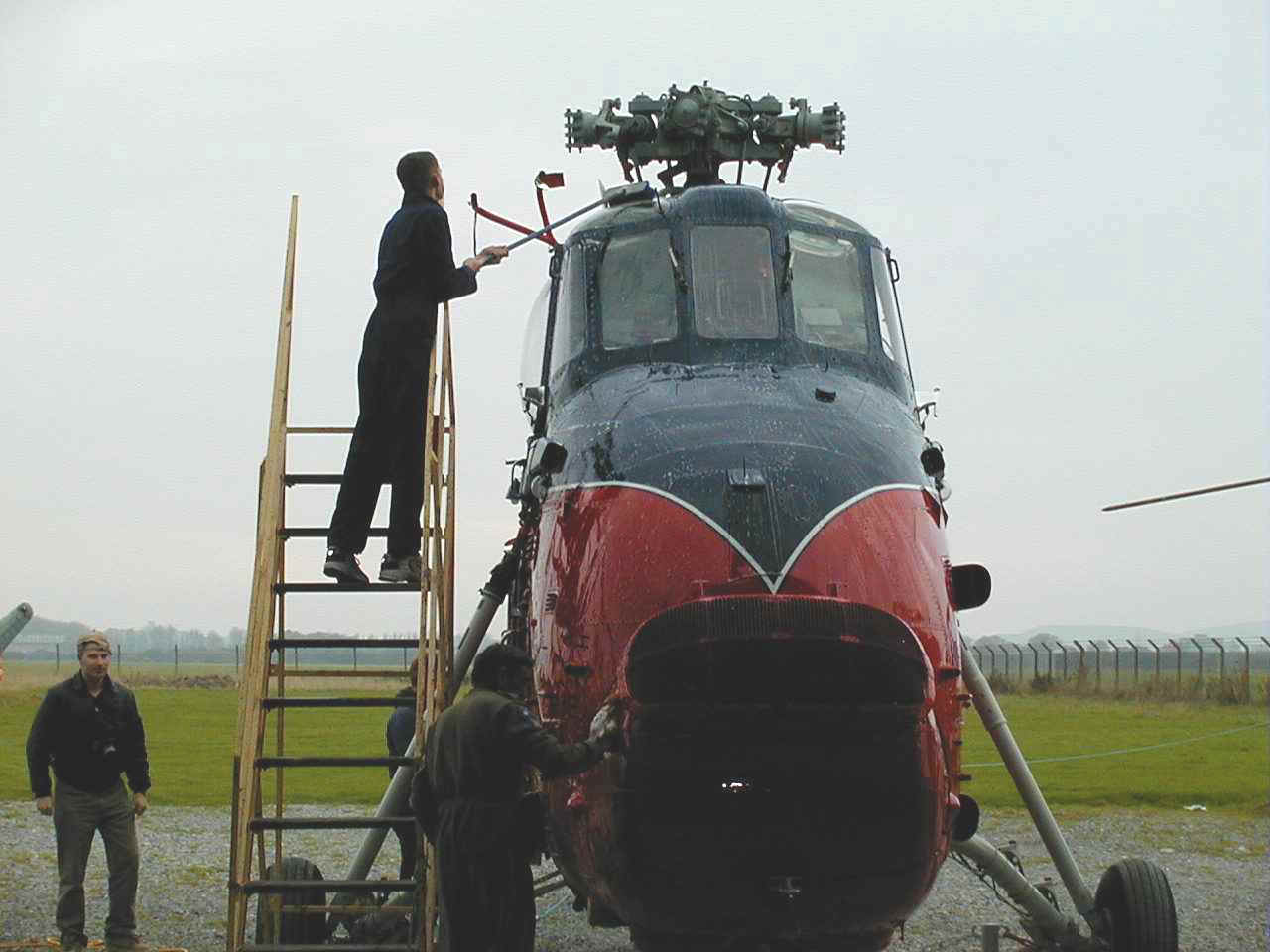 |
|
||||||||||||||||||||||||||||||||||||||||||||||||||||||||||||||||||||
 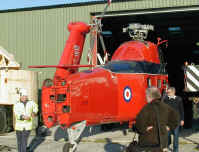 |
||||||||||||||||||||||||||||||||||||||||||||||||||||||||||||||||||||||
| Clearance check | Leg check | |||||||||||||||||||||||||||||||||||||||||||||||||||||||||||||||||||||
| On 17th November 2001, two days after its arrival at the Museum, XV733 was backed out of the Display Hangar for a couple of hours so that it could have a thorough wash and be restored to its usual immaculate condition. On the road journey south from Shawbury on the 15th, after a frosty night, it had been subjected to a lot of salt spray from the M6 motorway. | ||||||||||||||||||||||||||||||||||||||||||||||||||||||||||||||||||||||
|
Westland Wessex HCC4,
XV733, with interior fitted for Royal duties. |
|
||||||||||||||||||||||||||||||||||||||||||||||||||||||||||||||||||||
The Royal Helicopters
|
||||||||||||||||||||||||||||||||||||||||||||||||||||||||||||||||||||||
Roger Dudley,
a member of the Friends of the Helicopter Museum, writing
from Dorset in 2001, pointed out that three other aircraft,
albeit fixed-wing, based at Weston Airport many years ago,
had previous Royal connections. All three were owned by Western
Airways Ltd, the first operator of the airport. They were:- Puss Moth G-ABFV was owned by the then Prince of Wales for eight months in 1931 and used during his tour of South America. It entered service with Western Airways in 1932. Dragon Rapide G-ADDD was owned by the Prince of Wales
from mid-1935 and absorbed into the newly-created King's Flight
in July 1936. It was replaced by an Airspeed Envoy in 1937
and bought by Western Airways Ltd for £3,345. |
||||||||||||||||||||||||||||||||||||||||||||||||||||||||||||||||||||||
